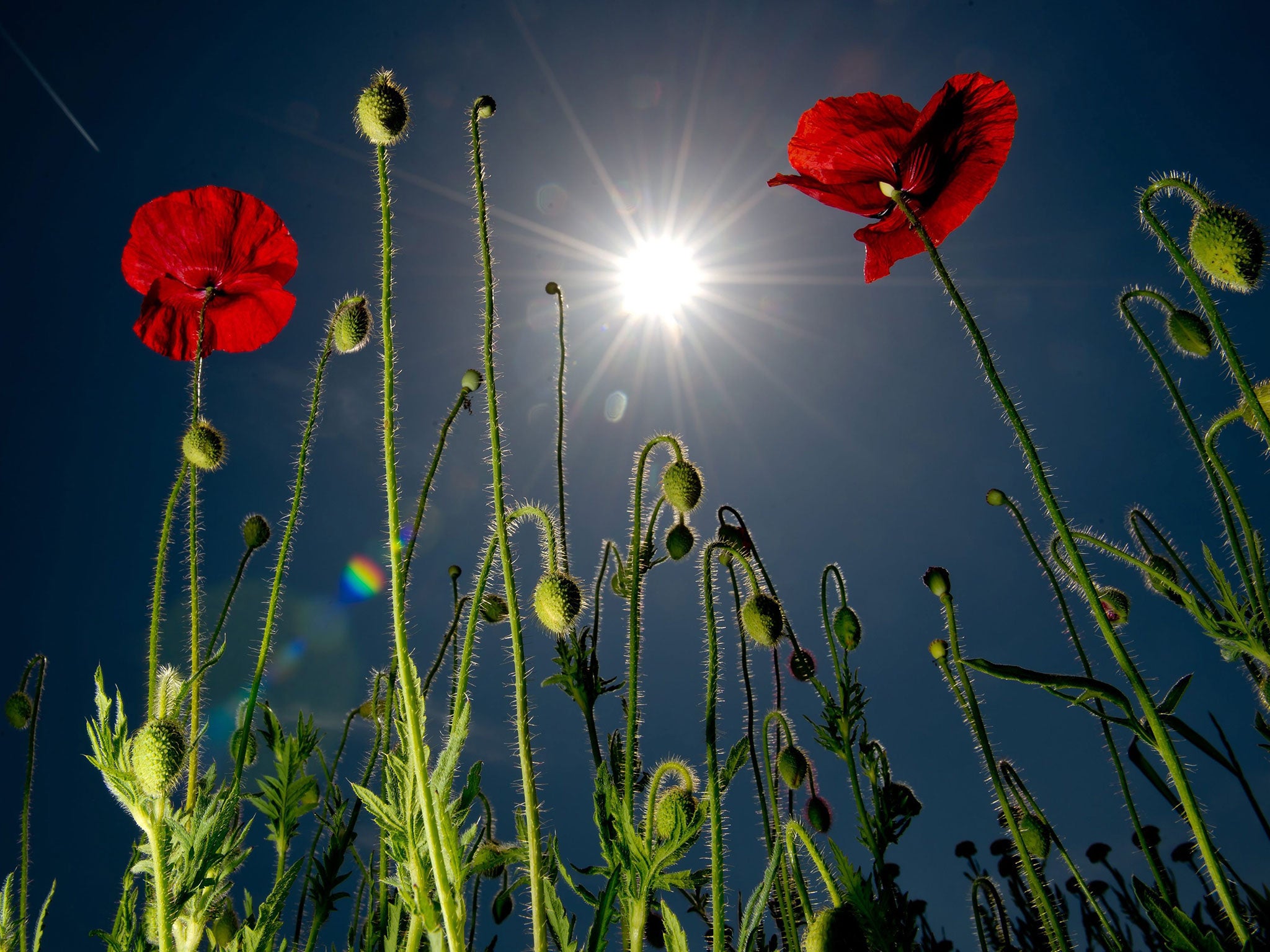Nature Studies: It takes exposure to the real thing to grasp the full power of the poppy
We invest so much in its symbolism that it's easy to forget the flower itself

Your support helps us to tell the story
From reproductive rights to climate change to Big Tech, The Independent is on the ground when the story is developing. Whether it's investigating the financials of Elon Musk's pro-Trump PAC or producing our latest documentary, 'The A Word', which shines a light on the American women fighting for reproductive rights, we know how important it is to parse out the facts from the messaging.
At such a critical moment in US history, we need reporters on the ground. Your donation allows us to keep sending journalists to speak to both sides of the story.
The Independent is trusted by Americans across the entire political spectrum. And unlike many other quality news outlets, we choose not to lock Americans out of our reporting and analysis with paywalls. We believe quality journalism should be available to everyone, paid for by those who can afford it.
Your support makes all the difference.It seems ironic that the flower in which we have invested more symbolism than any other this past century – symbolism which will reach a climax in six weeks’ time – should be one which in the wild we have largely wiped out.
For that is the paradox of the poppy. Do we still think of poppies as real blooms, brightly waving in fields? Or merely as pieces of red paper nestling in our buttonholes in the run-up to Remembrance Sunday in November?
I am inclined to think that for most people now, the principal image is the latter one, as poppy-wearing has become ubiquitous; poppy-flowering, on the other hand, is seen by fewer and fewer.
In fact, I have no doubt that today there must be countless people, the young especially, who have never experienced the involuntary gasp of and delight that comes with suddenly seeing a field full of scarlet, one of the most startling and uplifting sights the natural world has to offer.
For the common or field poppy – Papaver rhoaeas, once part of our very image of the countryside, has now gone from most of it. It is hard indeed these days to find a poppy field like the one Claude Monet so famously painted in the 19th century.
It was the archetypal arable plant – that is, the most typical wild flower of cornfields. There is a whole suite of wild plants which, when humans started agriculture about 10,000 BC, found they could flourish alongside farming, among the crops: essentially, plants which needed bare ground, and the soil surface to be broken (by ploughing), in order to germinate.
These wild flowers of cornfields have been part of the farmed landscape ever since, until 40 or 50 years ago, when agricultural intensification, especially the application of artificial fertilisers and herbicides, began to wipe them out.
Now many of them – such as cornflowers, corn marigolds and corn buttercups – are rare, while some, such as the lovely pale-purple corncockle, are virtually extinct. By comparison, common poppies are still widespread, but they have shrunk in numbers enormously and have vanished from many places.
At the same time, they have gone from strength to strength as symbols of our war dead, a representation which began, of course, with the First World War poem “In Flanders Fields” by the Canadian army doctor John McCrae:
In Flanders fields the poppies grow
Between the crosses, row on row,
That mark our place; and in the sky
The larks, still bravely singing, fly
Scarce heard amid the guns below
This symbolism will reach a culminating point on 5 August, when, to mark the hundredth anniversary of the Great War’s outbreak the day before, the dry moat at the Tower of London will be filled with nearly 900,000 ceramic poppies – 888,246 of them, to be precise, to represent every one of the British and colonial soldiers who died, according to the figures of the Commonwealth War Graves Commission. The moat will be turned into “a sea of red” until Armistice Day, 11 November, when the poppies will be sold to the public at £25 each; the money will go to military charities.
It sounds like a most imaginative and moving way to mark the outbreak of the “war to end wars” and I keenly look forward to seeing it; but last week, thinking about it, I was also seized with a desire to see real poppies once again, and so I went on a poppy pilgrimage to Kent.
For on the North Downs near Chatham the wild-flower charity Plantlife has a wonderful nature reserve, Ranscombe Farm, which specialises in protecting rare arable plants; it is one of the few sites in the country where corncockle still occurs. And walking around it with the warden, Richard Moyse, we came across a remarkable sight. In the valley below, were two fields. One was an intensively farmed field of beans, uniformly grey-green, with no hint of another colour; but next to it was a field that was exploding with bright red.
This, Richard explained, was a field which had just been taken out of farming and given over to conservation; and as poppy seeds remain in the soil for decades, if you stop spraying pesticides and just plough it over, they will all come up. And so they had.
I was thrilled by it. Not just by the great swathe of colour, so intense it left me elated; but by the fact that this symbol of loss for us, which we have taken to our hearts – and will do this summer more than ever – was not just a memorial, but still, despite its disappearances, a living flower as well.
Join our commenting forum
Join thought-provoking conversations, follow other Independent readers and see their replies
Comments